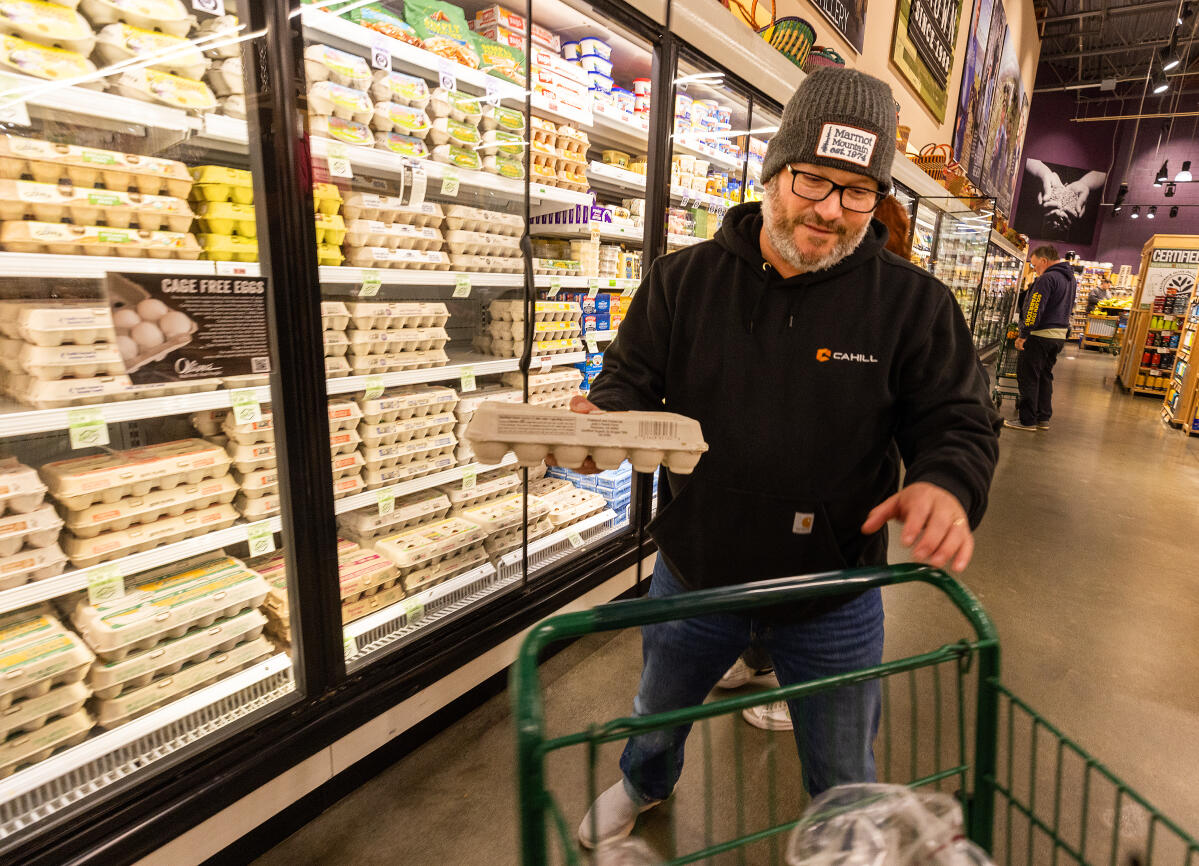New York — A storm of economic and agricultural challenges is reshaping the grocery landscape, with egg prices reaching record highs just as the holiday season accelerates demand. The combination of an aggressive avian flu outbreak and the festive rush has created an extraordinary strain on egg supply chains, leaving retailers and consumers struggling to adapt.
Eggs, long regarded as an affordable and versatile kitchen staple, are now among the most volatile commodities in the market. October marked a 30.4% year-over-year increase in prices, according to the Consumer Price Index, underscoring the dramatic shift. As families stock their kitchens for Thanksgiving and other seasonal festivities, the demand for eggs is reaching its annual peak.
“Thanksgiving dinner costs haven’t changed much compared to last year, except for eggs,” said Stew Leonard Jr., CEO of Stew Leonard’s, a family-owned grocery chain. “Eggs are the one category where prices have spiked significantly.”
The holiday season traditionally drives the highest sales volumes for eggs, as they are integral to a wide range of dishes. From breakfast casseroles to baked desserts, eggs are a cornerstone of festive cuisine. Emily Metz, president and CEO of the American Egg Board, described their unique role. “When it comes to the holidays, eggs are indispensable,” she said. “They are at the heart of baking, cooking, and entertaining, which makes their seasonal demand especially strong.”
However, this year’s surge in demand comes amid an unprecedented supply crisis. Avian flu, which began spreading in early 2022, has devastated poultry farms across the United States. More than 108 million birds have been lost to the disease, including 75 million egg-laying hens. This reduction represents 8% of the national egg supply, according to the American Farm Bureau Federation.
The crisis deepened in October, with new outbreaks reported in critical egg-producing states such as Oregon, Utah, and Washington. The USDA estimates that these outbreaks alone resulted in the loss of 2.8 million hens, equivalent to approximately 60 million eggs. With production forecasts for 2025 already revised downward, the industry is bracing for prolonged challenges.
“Egg prices are extremely sensitive to supply disruptions,” said Bernt Nelson, an economist with the American Farm Bureau Federation. “The combination of avian flu and holiday demand creates a perfect storm, driving prices higher and faster than usual.”
For grocery retailers, these challenges translate into difficult decisions about pricing. Wholesale costs have surged to $4.23 per dozen in New York, compared to $2.43 last year. For stores like Stew Leonard’s, maintaining customer trust while navigating razor-thin margins has become a priority.
“We’ve capped prices at $4.99 per dozen, even though our costs are higher,” Leonard Jr. said. “It’s a balancing act. Customers are price-sensitive, especially during the holidays, and we don’t want to lose their trust.”
Other grocers, such as Morton Williams in New York City, have seen similar cost pressures. Steve Schwartz, the chain’s director of sales and marketing, expressed concern about the long-term implications. “Wholesale prices doubled in October,” he said. “Eggs used to be the cheapest item in the store. Now they’re skyrocketing, and when prices fall, they never fully return to their previous levels.”
The rising cost of conventional eggs has also blurred the lines between standard and organic varieties. With prices now comparable, many consumers are opting for organic eggs during the holidays, believing they offer superior quality. However, this shift has placed additional strain on the organic supply chain, which is ill-equipped to handle the sudden demand.
Egg-based products are also feeling the pinch. From pasta to mayonnaise, the rising cost of eggs is beginning to ripple through other sectors, driving up prices for a wide range of goods. “Eggs are a foundational ingredient in so many products,” Schwartz said. “When their prices stay high, the effects spread far and wide.”
As the holiday season unfolds, eggs have become more than a breakfast staple—they are now a symbol of the economic challenges shaping grocery markets across the country.






